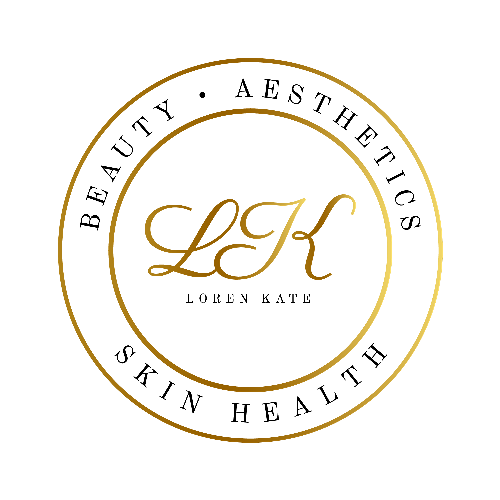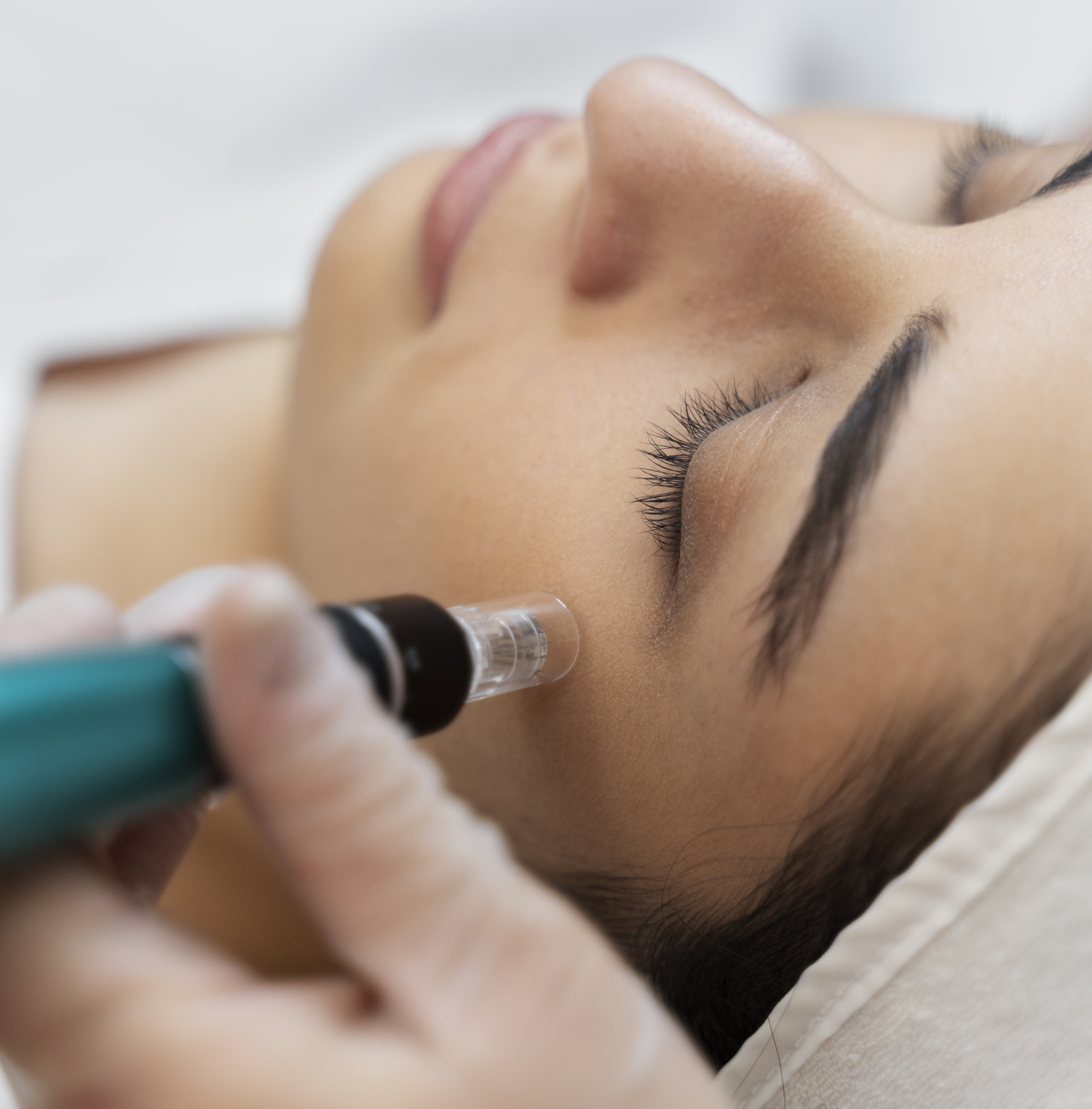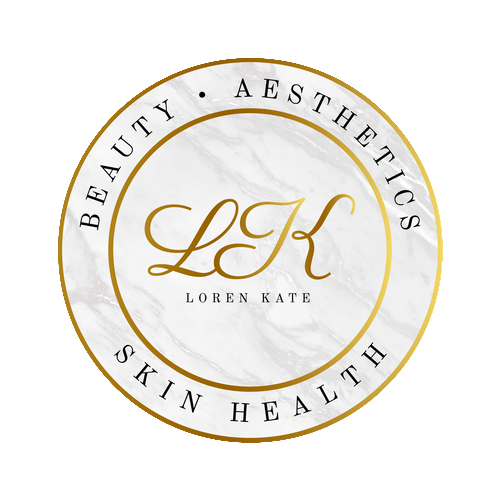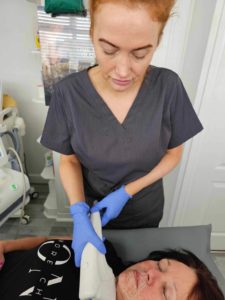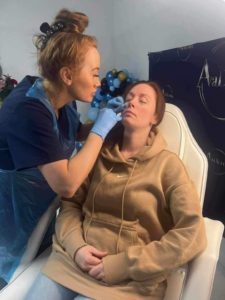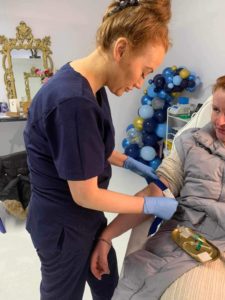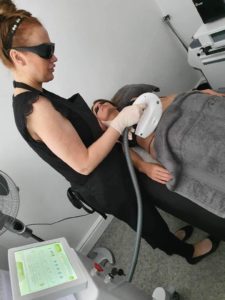The Carbon Peel is a two-stage process,
During the first stage, a carbon lotion is applied to the skin. The outer dead skin cells of the epidermis will absorb the carbon, but deeper living cells of the skin will not absorb the paste.
The removal of the lotion with the short pulse Q-Switched laser using a special tip with a 1064nm wavelength is used.
The laser reaches the dermis, this laser breaks up the carbon into fine particles and the absorbs them by destroying the carbon and removing the dead skin cells, oils and impurities that were bound to it.
The heat created also induces remodelling and contractions of the pores, making it an ideal treatment for those with enlarged pores. When targeted at acne, this high energy treatment goes straight to the acne’s membrane and destroys it, reducing acne and its related inflammation.
The second stage of the process is enhanced by using the laser to pass over the skin without any carbon paste, this allows energy to penetrate deeply into the dermis creating micro injury to the collagen and elastin fibres.
Controlled thermal damage stimulates the healing process. This causes collagen, elastin and fibroblast production and remodelling to rejuvenate the skin and target fine and wrinkles.
A series of treatment over 6 months or more can therefor cause new collagen formation.
